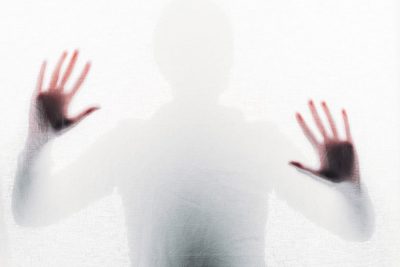
The inner turmoil created by the disorder can also result in depression. These experiences which strike at the core of a person's identity and consciousness may cause a person to feel uneasy or anxious. These individuals sometimes lack the "feeling" of a memory where they are able to recall a memory but feel as if they did not personally experience it. Additionally some individuals experience difficulty concentrating and problems with memory retrieval. This is to differentiate from external voices which are more commonly found in psychosis. One-third to one-half of patients with DPDR also experience hearing internal voices.

In some cases, individuals may be unable to accept their reflection as their own, or they may have out-of-body experiences. Individuals with the disorder commonly describe a feeling as though time is passing them by and they are not in the notion of the present. While depersonalization involves detachment from one's self, individuals with derealization feel detached from their surroundings, as if the world around them is foggy, dreamlike, or visually distorted. Individuals with depersonalization describe feeling disconnected from their physicality feeling as if they are not completely occupying their own body feeling as if their speech or physical movements are out of their control feeling detached from their own thoughts or emotions and experiencing themselves and their lives from a distance. People who are diagnosed with depersonalization also often experience an urge to question and think critically about the nature of reality and existence. The core symptoms of depersonalization-derealization disorder is the subjective experience of "unreality in one's self", or detachment from one's surroundings.
#DEPERSONALIZATION VS DEREALIZATION MANUAL#
3.2 Diagnostic and Statistical Manual of Mental Disorders, 5th Edition (DSM-5).While brief episodes of depersonalization or derealization can be common in the general population, the disorder is only diagnosed when these symptoms cause substantial distress or impair social, occupational, or other important areas of functioning. The chronic form of the disorder has a reported prevalence of 0.8 to 1.9%. While depersonalization-derealization disorder was once considered rare, lifetime experiences with it occur in about 1–2% of the general population. A diagnosis is made when the dissociation is persistent and interferes with the social or occupational functions of daily life. ĭiagnostic criteria for depersonalization-derealization disorder includes persistent or recurrent feelings of detachment from one's mental or bodily processes or from one's surroundings. However, in some certain situations this state of mind could last either hours, days, and possibly even weeks at a time. Those who do have this disorder could be in a depersonalized state for as long as a regular panic attack lasts.

Triggers may include significant stress, panic attacks, and drug use.

Adverse early childhood experiences, specifically emotional abuse and neglect have been linked to the development of depersonalization symptoms. ĭepersonalization-derealization disorder is thought to be caused largely by interpersonal trauma such as childhood abuse. Individuals experiencing derealization may report perceiving the world around them as foggy, dreamlike/surreal, or visually distorted. Derealization is described as detachment from one's surroundings. Individuals may report feeling as if they are an outside observer of their own thoughts or body, and often report feeling a loss of control over their thoughts or actions. Depersonalization is described as feeling disconnected or detached from one's self. Medical condition Depersonalization-derealization disorderĭepersonalization-derealization disorder ( DPDR, DPD) is a mental disorder in which the person has persistent or recurrent feelings of depersonalization or derealization.


 0 kommentar(er)
0 kommentar(er)
